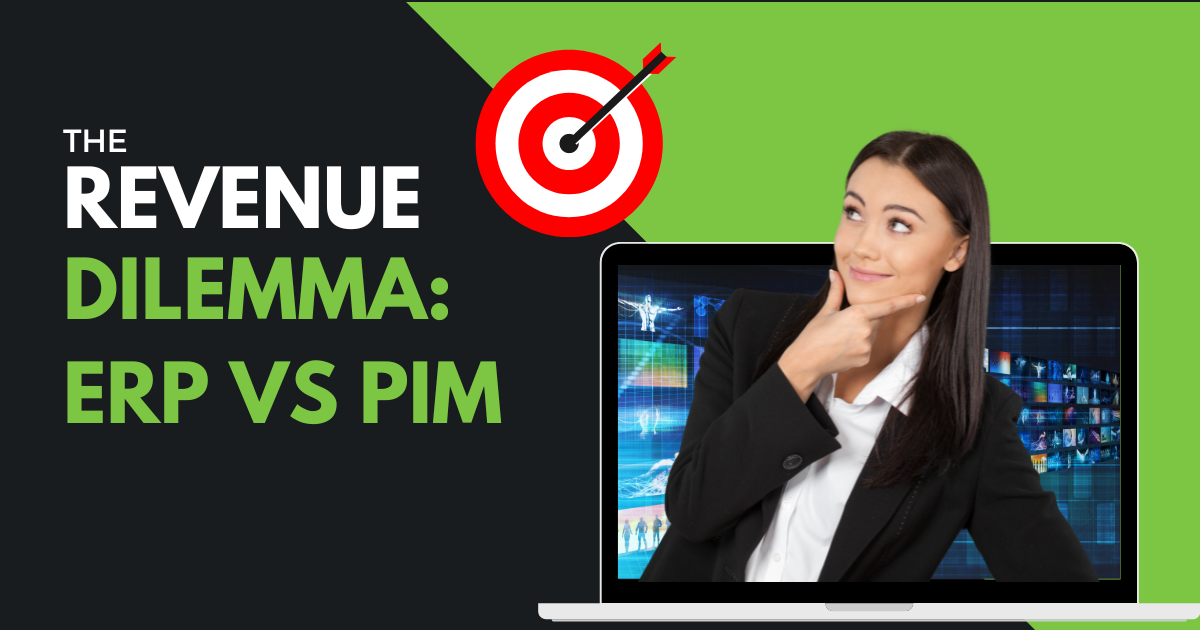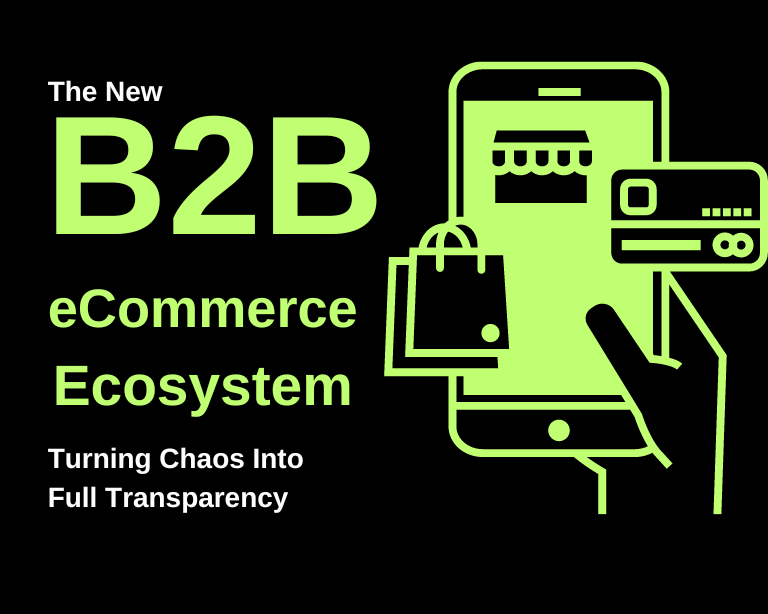The Revenue Dilemma
PIM or ERP?
One of the more frequent questions we get from product teams in the digital conversion process is whether a PIM or ERP is right solution for optimizing product catalogs for sell-side search, marketing & merchandising.
Our answer is always “it depends.” If you are converting complex high-SKU catalogs like many manufacturers & distributors, then “yes, you need a PIM.”
Here’s Why…
Head-to-Head Comparison: ERP vs PIM
“The search bar is often your first-contact virtual salesperson. When a buyer enters your site, it’s like meeting a new customer, you want to make a good first impression,” Rob Neumann
The first question to ask when considering PIM middleware revolves around catalog complexity which can be a high number of SKUs, product variants, international sales & distribution channels, high-volume enterprise customers, or rapid product turnover. A poorly designed sell-side product taxonomy often results in frustrating customer experiences, null search results, high abandonment metrics, and limited scalability.
PIM or ERP for Complex High-SKU Digital Catalogs
Product Data Optimization
Superior Communications CIO Ted Wichman describes his team’s decision to use PIM middleware for product data optimization due to a high number of SKUs, big-box enterprise bulk purchasing, rapid product turnover, & complex distribution channels.
“Our internal PIM was not geared towards marketing information. It was a manufacturing PIM (with) tiny ERP descriptions which work for accounting, production, and assembly, but not for our website (search & merchandising display). When I looked at the (product) attributes available, the (navigation) menu hierarchy; they just weren’t web ready…and the category tree; that was terrible too.”
PIMs consolidate all product information & media assets to optimize your products from a sell-side merchandising & marketing perspective.
ERPs are great for “accounting, production, and assembly” but don’t provide the granularity needed to effectively market products & brands or the flexibility to scale rapidly in the ever-evolving new digital B2B ecosystem.
Digital Media Management
ERPs aren’t designed to store and manage digital sales and marketing assets which is the reason spreadsheets, in-house software, & 3rd party solutions are widely used but poorly integrated.
PIMs allow you to consolidate & optimize digital media assets like brand imagery, logos, user manuals, product images, 3D graphics, installation videos needed to effectively sell your products, promote your brand(s), or provide aftersales support services.
Site Search Optimization
ERPs have limited product description fields & tend to be designed around internal processes. They don’t offer the descriptive power required for fast, accurate product discovery & makes it extremely difficult to leverage advanced AI/ML search contextualization & merchandising technology.
PIMs allow you to add digital pipelines to all internal & external product information sources to vastly expand your site search parameters. Once optimized, it forms a centralized database index which staff can pull for sales, marketing, & merchandising activities. It also sets the stage for leveraging advanced AI/ML search & merchandising technology that contextualizes buyer behavior to determine relevancy.
Search & Merchandising Product Relationships
ERPs aren’t designed for managing sell-side activities other than recording shopping cart transactions & updating website product availability.
PIMs are specifically designed to optimize product information for effective front-end search, marketing, & merchandising.
For example, “we have an MRO client that carries a large number of SKUs. One of the problems we solved was to connect their part number, the manufacturer’s part number, & competitor part numbers (together) with a common description to offer customers a number of search pathways to the same product. All of that (product) relationship is more easily managed inside a PIM,” Rob Neumann CSS Commerce
PIM or ERP for Future-Proof Scalability
ERP Time-to-Market: 6-12 Months
ERP to ERP data mapping for new acquisitions is a time-consuming project that could take six months to more than a year to complete.
PIM Time-to-Market: 30 Days
ERP to PIM data mapping can be accomplished in as little as 30 days. Unlimited expansion opportunities with no-tech point-and-click storefront, channel, & marketplace creation. They offer low-tech REST API integrators that allow you to upgrade back- & front-end software solutions without the typical business disruption of ERP integrations.
“Our secret sauce is how extract it (product data) out of your ERP faster! We can typically have them (products) optimized in a PIM & available for sale in under 30 days including automatic language & currency conversions for international sales channels” Tom Sieger, CSS Commerce
Data Mapping & Integration
Optimal Sell-Side Taxonomy
Although next-generation ERP e-commerce platforms are designed for omni-channel digital commerce, they don’t have the functionality to efficiently optimize complex and/or high-SKU product catalogs for effective sell-side sales & merchandising.
“If I were to advise how to do it (sell-side taxonomy) right (scalability, flexibility); let’s think about the structure, hierarchy, and how you want to relate objects (attributes),” advises Rob Neumann CDO CSS Commerce, “doing that much upfront work on long-term enhancements has tremendous benefit. Setting up your hierarchy and master data structure (in a PIM) will lead to a lot of success.”
BOMs, Assemblies, & OEM Parts
Although ERPs/MRPs have the hierarchal capability for BOMs & assemblies, that level of granularity cannot be loaded onto storefront e-commerce platforms without making the site unusable.
A PIM is an intermediate solution for storing, managing, & optimizing sell-side product content for effective site search & merchandising. The buyer’s search query determines category & product relevancy and pushes those results into the storefront for selection. As a result, the storefront doesn’t become overburdened with non-relevancy that often leads to website performance abandonment.
An OEM equipment & parts dealership can create & optimize BOMs & assemblies inside a PIM and then feed finished products & individual components (down to the nuts & bolts) as they are received to pre-configured digital channels automatically.
For example, “we have a new client that sends a data packet based on a buyer request.” (Buyer) goes in and enters a BOM, a pre-filtered product catalog gets assembled in PIM, and automatically sent to the buyer.” Rob Neumann CSS Commerce
BOMs, Assemblies, & OEM Parts
Direct ERP integration to your e-commerce platform makes it extremely difficult to upgrade systems in the future. It typically results in shutting your e-commerce website down & redeploying which can frustrate customers trying to fill their orders.
PIM middleware allows you to consolidate & optimize your product information once & then feed relevant data back-and-forth to legacy systems & new software solutions through low-tech API integration.
The Verdict
It’s not ERP or PIM for those with complex high-SKU product catalogs, it’s ERP and PIM. They each have their specialty and complement each other. A PIM synergizes back- & front-end systems by acting as an intermediary solution that future-proofs your product catalog against systems upgrades & technological advances.

